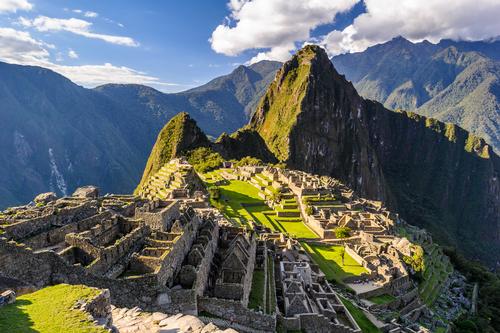see all jobs
Machu Picchu rule change raises heritage protection concerns
A suggestion to extend the opening hours of Machu Picchu – Peru’s most famous landmark – has been met with concern over increased visitor footfall damaging the ancient ruins.
Visitor demand for the 15th-century site – located on a mountain ridge above the Sacred Valley of the Incas – is high, with a 2,500 person limit imposed to retain the site’s World Heritage status granted by UNESCO.
If the cliff-top site stays open later, local authorities suggest that the number of visitors coming to Machu Picchu could double and although no official announcement has been made, it is expected a new schedule will be released later this month, with a first shift running from 8am to 1pm and then a second shift running from 1pm till 8pm – a change from a 5pm close.
“More boots on the ground will lead to deterioration of the steps and walls, lawns and footpaths, and probably a need for more vigilance and protective ropes,” said Chris Moss, cultural expert on Latin America, speaking to The Telegraph.
“Longer hours won't mean fewer people in the current opening hours, but more demand all over. It's like widening a motorway. More cars come, that's all."
UNESCO has said that it could not comment on the new hours unless the issue has first been the subject of a decision by the World Heritage Committee (WHC). A 2012 conservation report suggested adding the site to the ‘World Heritage in danger’ list, stating that the imposed 2,500 visitor daily limit has been “exceeded on numerous occasions.
“The World Heritage Committee and the Advisory Bodies recognise that there are many challenges that have not been successfully met,” the conservation report said, “including the uncontrolled development at Machu Picchu village, the increase in visitation, and continuing problems with visitor access, among others.
“They consider that the intention to increase the number of visitors to the property would further exacerbate existing problems.”
Machu Picchu spent 461 years undiscovered to the western world before being found in 1911. The site lies 7,970 feet (2,430 metres) above sea level and welcomes at present more than 400,000 guests annually.
Because of its huge popularity, the heritage site has come under continual threat from both visitors and developers. At one point in the late 1990s, the Peruvian government granted concessions to allow the construction of a cable car and development of a luxury hotel, including a tourist complex with boutiques and restaurants, though plans fell through in the face of mass protest. Other potential schemes have included building a bridge to allow easier access and allowing flights overhead in the area which is currently a no-fly zone.
More News
- News by sector (all)
- All news
- Fitness
- Personal trainer
- Sport
- Spa
- Swimming
- Hospitality
- Entertainment & Gaming
- Commercial Leisure
- Property
- Architecture
- Design
- Tourism
- Travel
- Attractions
- Theme & Water Parks
- Arts & Culture
- Heritage & Museums
- Parks & Countryside
- Sales & Marketing
- Public Sector
- Training
- People
- Executive
- Apprenticeships
- Suppliers
















































